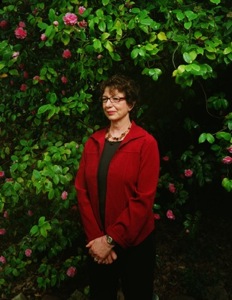Stories of Hope: Deafness
 Diane Kaljian‘s father was paralyzed and bedridden from a stroke. But he could still speak.
Diane Kaljian‘s father was paralyzed and bedridden from a stroke. But he could still speak.
“I was hoping to talk to him, but I could never do that,” Kaljian said. Her hearing loss was so profound, his low, gravelly voice couldn’t penetrate. “I was not able to hear his last words to me,” said the mother of three.
Four years ago, the year after she retired from teaching, Kaljian lost her hearing. It’s transformed her life in unwelcome ways, robbing her of music, the sound of her three grandchildren’s voices, and the ease of small talk.
“One of the things that’s difficult is losing humor. I can’t participate. And then, a burst of laughter is like a gunshot. It’s too loud. It’s uncomfortable.”
Every once in awhile, unexpectedly, she will hear. It’s never very loud, but it’s clear, which gives a bit of optimism and a sense of urgency that maybe there’s something left to be saved.
If there is, stem cells are her best hope, the 64-year-old Kaljian said. “Though help will likely come too late for me, being able to participate in the CIRM event made me feel that I played a small part in the help that will inevitably be available to others.”
Curing Deafness
About 36 million Americans report some degree of hearing loss, but 95 percent of those people have the kind of problem no physician can repair, says otolaryngologist Karen Jo Doyle, MD, PhD, at the University of California, Davis. This is the damage stem cell research targets. Hidden within the curling cochlea in the inner ear, some 10,000 hair cells line up in four rows, dancing to the sound waves in the cochlea’s liquid-filled canals. The motion in three of those rows serves to amplify the sloshing. It is in the fourth row, called the inner hair cells, where the gyrations turn into electrical impulses that travel along the spiral ganglia to the brain. There, the dancing becomes a whisper of a breeze through the trees or a baby’s contented gurgle.
When aging, loud noise, infection or toxins — including some medications — kills these hair cells, the subtle breeze falls silent forever. Lose enough cells and even speech becomes indistinct mumbling. Ebenezer Yamoah, PhD, a neuroscience professor at the University of California, Davis, hopes to create new hair cells that can reverse the previously irreversible course of deafness.
Using adult stem cells, Yamoah’s lab has grown what appear to be perfect hair cells, each with a hair cell’s multiple antennae, and each issuing a hair cell’s specific brew of chemical signals. When he put these hair cells in a dish with spiral ganglion stem cells, together they create electrical signals in response to mechanical stimulation.
The cells still must be tested in animals, Yamoah says, to make sure they take residence in the right part of the cochlea, an instrument arranged to receive high-frequency sounds at its widest part and low-pitched noises at its apex.
“We think our method may be advantageous because we are collecting these cells from the same region of the brain that hair cells arise from,” Yamoah said. “They’re from the same embryonic lineage.”
“This is the area in which we hold great hope for stem cells,” Doyle said.
“The psychological impact and the financial impact of deafness are relatively high,” Yamoah said. “Helen Keller said, ‘Blindness cuts us off from things, but deafness cuts us off from people.’ Human intercourse is truly defined by our ability to communicate through sound.”
